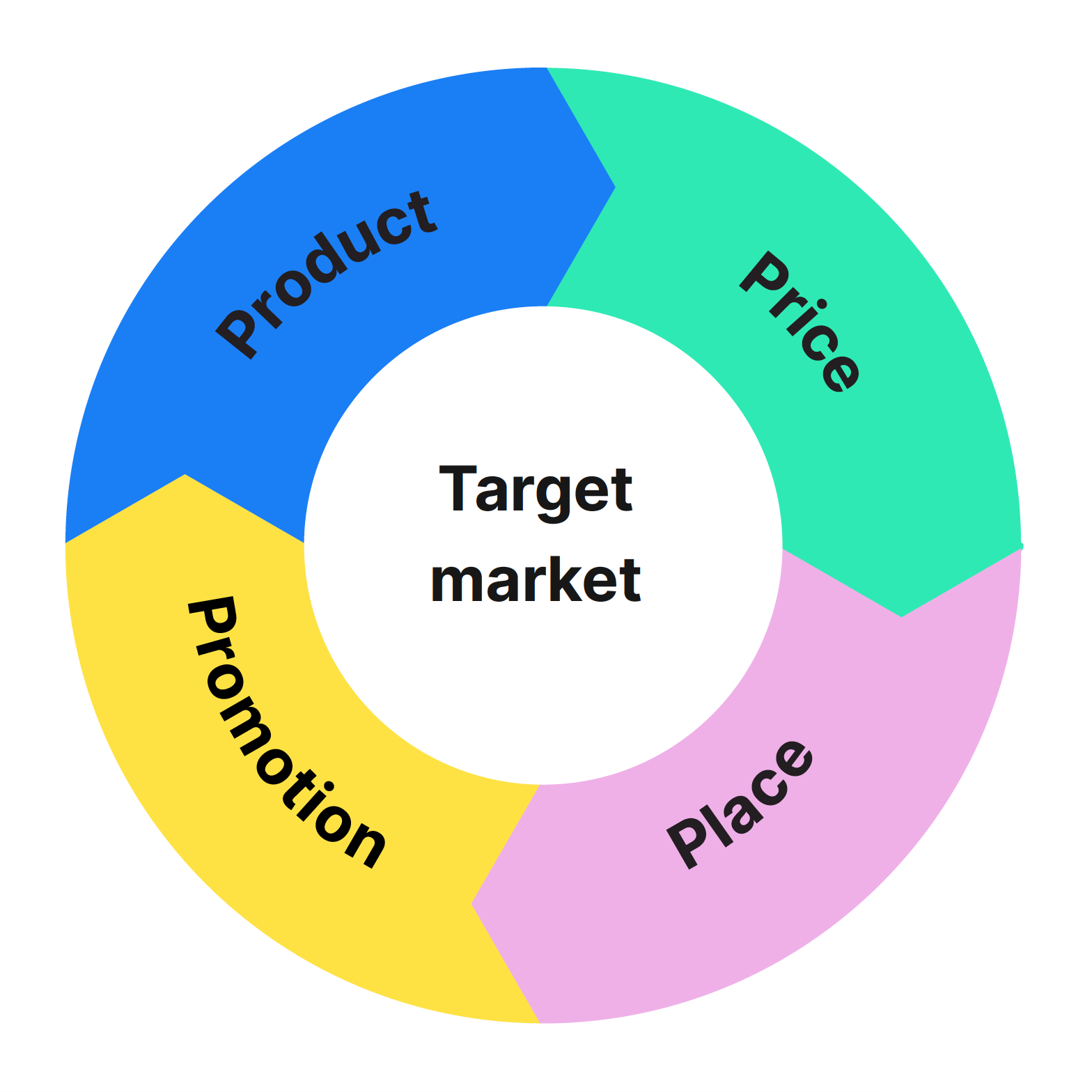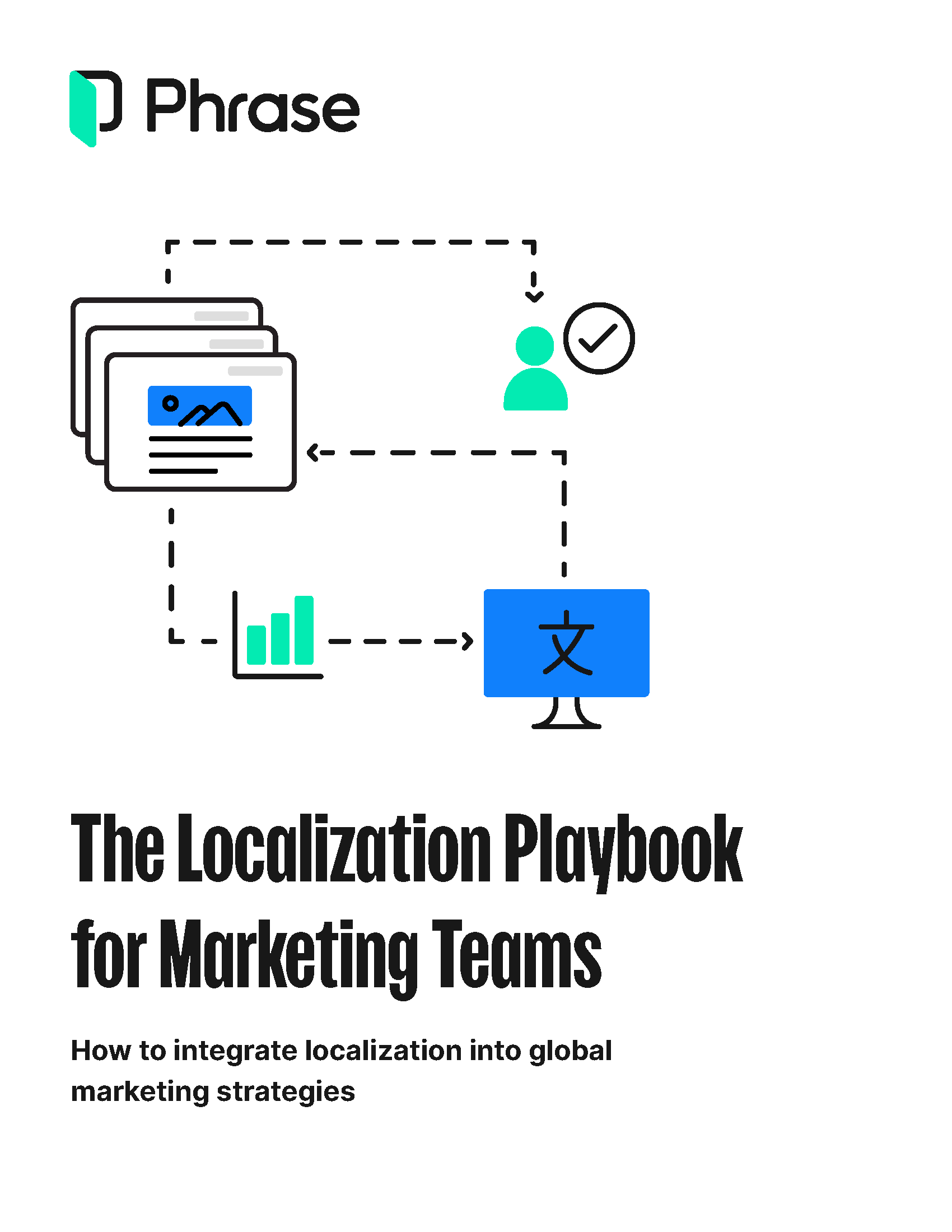Global business
Speaking Your Customer’s Language: A Complete Guide to International Marketing

When brands aim to target multiple markets worldwide, effective international marketing allows them to seamlessly integrate with local cultures. Take, for example, Dunkin’ Donuts. In its 2013 Donut Day campaign, the company provided tailored widgets for 24 different markets, offering consumers a localized feel with unique menus and messaging adapted to each language and culture.
View this post on Instagram
The campaign became so popular that the company made Donut Day an annual event. Customers worldwide now celebrate National Donut Day in their local markets, eagerly anticipating Dunkin’ Donuts’ brand festivities and exciting offers. This is just one example of how powerful international marketing can be in promoting offers within a local context. Discover how to make it work for you in our complete guide.
What is international marketing?
International marketing promotes products or services in different target markets by adapting them to local needs, preferences, and expectations.
The key objective of international marketing is to create a global brand presence while tailoring marketing strategies to each specific region’s culture, demographics, and consumer behavior.
Unlike domestic marketing, where the focus is on a single local market, international marketing involves a broader scope, requiring businesses to adapt to the diverse needs, preferences, and regulations of multiple markets.
This adaptation process is known as marketing localization and stands as the core difference between international and global marketing. More on that later.
How international marketing works
The essence of international marketing lies in its adaptability. Companies must be agile enough to reimagine the entire marketing mix—product, price, place, and promotion—to align with local market dynamics.

- Cultural sensitivity: Understanding local customs and values is essential for crafting campaigns that connect with local audiences. This can help you in aligning product color schemes with cultural symbolism, transcreating slogans to prevent unintended meanings or connotations, etc.
- Legal compliance: Each country has its unique rules governing product standards, advertising ethics, and consumer rights. Therefore, businesses must become well-versed in the laws of each market they enter, often requiring collaboration with local experts to avoid fines or legal actions.
What is transcreation?
The art of balancing creativity and cultural sensitivity is key to crafting marketing messages that resonate with audiences in diverse target markets.
For example, a fast-food chain may offer a vegetarian menu in India due to religious considerations, while in the United States, the focus might be on quick, meat-based meals. Similarly, a skincare brand may offer lighter formulations for humid climates and richer products for colder regions.
How is international marketing different from global marketing?
One common misconception is that international marketing and global marketing are interchangeable terms. While both involve marketing across borders, they differ fundamentally in their approach to market adaptation.
In international marketing, the focus is on customizing the entire marketing mix to suit the specific needs and preferences of each local market.
This could mean altering the product features, adapting the advertising language and visuals, or even changing the pricing strategy to match local economic conditions. The aim is to resonate with the local consumer base while maintaining the core brand identity.
Global marketing adopts a “one-size-fits-all” approach, where the same products and marketing strategies are applied uniformly across all markets with minimal intervention.
The idea is to create a consistent brand image worldwide—capitalizing on economies of scale and scope. While this approach may work for products with universal appeal, it often overlooks the nuances of local cultures, consumer behaviors, and market conditions.
Here’s a detailed overview of the differences between international and global marketing:
| International marketing | Global marketing | |
| Approach | Adaptive and localized | Standardized and uniform |
| Target market | Multiple markets with local adaptations | One-size-fits-all strategy |
| Product | Adapted to local preferences and needs | Same product for all markets |
| Price | Varies based on local economy | Generally consistent across markets |
| Place | Tailored distribution channels | Uniform distribution strategy |
| Promotion | Marketing campaigns adapted to local cultures | Single marketing campaign for all markets |
| Cultural sensitivity | High, due to focus on local customs and behaviors | Low, as the focus is on a uniform brand image |
| Legal compliance | Must comply with local laws and regulations | Focus on international laws and standards |
| Risk | Lower, due to market diversification | Higher, due to uniform approach |
| Cost | Higher, due to localization efforts | Lower, due to economies of scale |
| Consumer engagement | Higher, due to localized approach | May vary, as the strategy may not resonate locally |
For example, a global marketing strategy might involve launching a single advertising campaign worldwide, with minimal changes to the content. This could be effective for a software company selling a device with universal functionalities. However, for a food and beverage company, such a strategy could backfire if the product features flavors that aren’t universally accepted in every target market.

FREE DOWNLOAD
Make global marketing strategies work in local markets
Harness the power of localization to effectively connect with audiences worldwide and discover best practices for making your next global marketing endeavor a success.
Key international marketing types
Understanding the different types of international marketing is crucial for businesses looking to expand their reach beyond domestic borders.
Each type offers its own set of advantages and challenges, so the choice will often depend on the company’s resources and global expansion strategy.
Let’s take a look at some key types of international marketing.
Export marketing
The simplest form of international marketing involves exporting products to foreign markets.
This approach requires minimal investment and allows companies to test the waters before committing to more extensive strategies.
However, businesses must navigate trade regulations, tariffs, and local distribution networks.
Franchising
Franchising allows businesses to license their brand and business model to local operators in foreign countries.
This reduces the financial risk and operational burden on the parent company, but it also requires a strong, universally appealing brand that can be easily adapted to local markets.
Joint ventures and partnerships
In this model, a company collaborates with a local business to share the costs, risks, and profits of the international operation.
Joint ventures and partnerships offer the advantage of local market knowledge but may involve complex negotiations and shared decision-making.
Direct investment
Direct investment involves establishing a physical presence in the foreign market, such as opening a subsidiary, manufacturing facility, or retail store.
While this approach offers the most control, it also requires significant investment and exposes the company to higher risks, including political instability and currency fluctuations.
Licensing
Licensing involves granting permission to a foreign entity to use your intellectual property, such as trademarks, patents, or technology, in exchange for royalties or fees.
It allows companies to generate revenue from their intellectual assets without the need for significant investment or direct involvement in foreign operations. However, it requires careful monitoring to protect intellectual property rights.
As we can see, each type of international marketing comes with its own benefits and drawbacks, so it’s advisable to choose the right mix of these strategies—tailored to the company’s capabilities and the specific needs of each target market.
For example, a restaurant chain expanding into new markets may benefit from following a joint venture, partnership, or franchise model, allowing the company to decentralize its cost burden and incorporate local management and leadership into operations within each market.
Benefits of international marketing
Marketing products and services in international markets offers many advantages that can significantly impact a company’s bottom line. Let’s review some key benefits that can make a difference for your business:
Increased market share
One of the most obvious advantages of international marketing is the expansion of the customer base. By entering new markets, companies can tap into a larger pool of potential consumers, increasing their market share, and strengthening their resilience and stability.
Diversification
Relying solely on a domestic market can be risky, especially during economic downturns. International marketing allows for diversification, spreading the risk across multiple markets. If one market faces challenges, your business can still capitalize on opportunities in another market.
Competitive advantage
Companies that successfully market their products internationally often enjoy a stronger brand image and recognition—which can be leveraged to gain market share even in highly competitive environments.
Because competitive advantage can be multiplied through international marketing, your business gains enhanced standing across individual markets.
Your company is then in a position to leverage a strong global position as well as strengths in each market one-on-one.
Innovation and learning
The experience gained from international marketing can provide valuable insights into consumer behavior, market trends, and operational efficiencies. With a more robust knowledge foundation, your company is better equipped for future global expansion and operations.
Seasonal fluctuations
Seasonal fluctuations can pose challenges for businesses that rely on specific selling seasons. International marketing can help balance these fluctuations by selling products in markets with different seasonal cycles.
For example, a clothing company can sell summer wear in both the Northern and Southern Hemispheres, effectively doubling the selling season.
By mitigating the impact of seasonal fluctuations, international marketing enhances business resilience, ensuring a more consistent and predictable revenue flow.
Enhanced brand image
Successfully marketing products or services internationally can enhance a brand’s image, increasing its appeal even in the domestic market.
The perception of being an international brand adds prestige and attracts a wider customer base. A strong domestic brand reputation can extend internationally, fostering trust and reliability.
Regulatory benefits
In some cases, international markets may offer better regulatory conditions like tax breaks or reduced tariffs, which can boost profitability. Still, it’s crucial to do your homework and follow local laws to avoid legal trouble and damage to your brand.
Since differing regulations can make or break international marketing success, knowing how to handle them can give your company a competitive edge.
What makes an international marketing strategy
An international marketing strategy serves the same purpose for international expansion as a roadmap does for a journey. It’s a plan that outlines where you want to go, how you’re going to get there, what challenges you might experience along the way, and how you will address them.
And just like with journeys, it’s not impossible to get to your destination without a plan—but you’re much more likely to encounter issues along the way and arrive at your destination later than you had hoped—if you arrive there at all.
That’s why any international marketing endeavor should rest on a solid strategy from the very beginning. Creating an international marketing strategy will be different from one company to another, but it generally involves 3 stages:
- Analysis (diagnosis)
- Choice (guiding policy)
- Execution (coherent action)
Let’s break down these three stages one by one.
Stage 1: Analysis
Result: In-depth understanding of the target market and the best entry strategy.
Goal setting
Establish specific objectives and targets that will guide the development of the international marketing strategy, ensuring alignment with the company’s expansion goals.
Market research
Begin by conducting thorough market research. Gather data on market size, growth potential, customer demographics, and trends. For each target market, understand the cultural nuances and legal requirements, including language, customs, regulations, and any potential barriers to entry.
Competitive analysis
Analyze competitors in the target market. Identify their strengths, weaknesses, market share, and strategies. This will help in positioning your company effectively.
SWOT analysis
Conduct a SWOT analysis (strengths, weaknesses, opportunities, threats) to assess your company’s internal capabilities and external factors that may impact your international expansion.
Market entry assessment
Evaluate various market entry options such as exporting, licensing, joint ventures, or establishing a wholly-owned subsidiary. Select the most suitable entry strategy based on your analysis.
Stage 2: Choice
Result: Clear strategic direction, target audience, value proposition, positioning, pricing, and distribution strategy.
Target market segmentation
Define your target audience within the international market. Segment the market based on demographics, psychographics, and behavioral factors.
Value proposition
Develop a unique value proposition tailored to each target market. Highlight how your product or service meets the specific needs and preferences of the target audience.
Positioning strategy
Determine how you want your brand to be perceived in the international market. Create a market positioning strategy that sets you apart from competitors.
Pricing strategy
Establish a pricing strategy that factors in local market conditions, competitive pricing, and cost considerations. Ensure it aligns with your value proposition.
Distribution and promotion channels
Carefully select the channels for promoting your product to ensure effective reach to your target audience.This may involve partnerships with local distributors or the use of e-commerce platforms.
Stage 3: Execution
Result: Effective implementation of strategy, localization, marketing, sales, monitoring, and risk management for successful expansion.
Localization
Tailor your product, marketing materials, and communication to align seamlessly with the local culture and language. Localization is a nuanced process with many moving parts, including translating content and customizing product features if needed.
Marketing and promotion
Execute marketing campaigns tailored to the international market. This may involve digital marketing, advertising, social media, and other relevant channels.
Sales
Implement your chosen distribution strategy. Ensure your product is readily available to customers through your chosen channels.
Monitoring
Continuously monitor the performance of your international marketing efforts. Gather feedback, track key performance indicators (KPIs), and be prepared to make adjustments as needed.
Compliance and risk management
Stay compliant with local laws and regulations. Develop a risk management plan to address potential challenges such as currency fluctuations, political instability, or supply chain disruptions.
DIVE DEEPER
What is localization, and why does it matter?
Find out why localization isn’t the same as translation and how it can support companies in expanding the global footprint of their business.
International marketing examples to learn from
In the world of international marketing, real-life examples offer valuable lessons. By delving into both successful and unsuccessful international marketing campaigns, businesses can gain precious insights into handling the intricacies of various markets, cultures, and consumer behaviors, helping companies fine-tune their international marketing strategies and steer clear of typical pitfalls along the way.
BMW: Understanding local norms
On the flip side, BMW’s international marketing campaign in the United Arab Emirates (UAE) serves as a cautionary tale. The campaign used the market’s national anthem in a commercial, sparking local complaints and leading to the withdrawal of the campaign. The lesson here is the importance of cultural sensitivity and understanding local norms when crafting international marketing strategies.
Lay’s: Adapting to local tastes
Lay’s potato chips offer another example of successful international marketing. Known by different names like “Walkers,” “Smiths,” “Sabritas,” and “Margarita” in various parts of the world, Lay’s also adapts its flavors to local tastes. For instance, you’ll find ‘Masala’ flavored Lay’s in India and ‘Nori Seaweed’ in Japan. This adaptation to local preferences has helped Lay’s maintain a strong global presence while appealing to local tastes.
Dolce & Gabbana: Cultural sensitivity
Dolce & Gabbana faced significant backlash for a series of ads released in China that were considered culturally insensitive. The ads featured a Chinese model struggling to eat pizza and spaghetti with chopsticks, leading to public outrage and calls for a boycott of the brand. This example underscores the potential pitfalls of not adequately researching and understanding the cultural context of your target markets.





